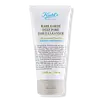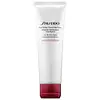What's inside
What's inside
 Key Ingredients
Key Ingredients

 Benefits
Benefits

 Concerns
Concerns

 Ingredients Side-by-side
Ingredients Side-by-side

Water
Skin ConditioningKaolin
AbrasiveGlycerin
HumectantAlcohol Denat.
AntimicrobialSodium Cocoyl Glycinate
CleansingCoco-Betaine
CleansingAcrylates Copolymer
Sodium Chloride
MaskingCI 77891
Cosmetic ColorantSolum Diatomeae
AbrasivePhenoxyethanol
PreservativePEG-14m
Emulsion StabilisingGlycol Distearate
EmollientSodium Benzoate
MaskingAloe Barbadensis Leaf Juice
Skin ConditioningSalicylic Acid
MaskingAvena Sativa Kernel Flour
AbrasiveTocopherol
AntioxidantSodium Hydroxide
BufferingAllantoin
Skin ConditioningWater, Kaolin, Glycerin, Alcohol Denat., Sodium Cocoyl Glycinate, Coco-Betaine, Acrylates Copolymer, Sodium Chloride, CI 77891, Solum Diatomeae, Phenoxyethanol, PEG-14m, Glycol Distearate, Sodium Benzoate, Aloe Barbadensis Leaf Juice, Salicylic Acid, Avena Sativa Kernel Flour, Tocopherol, Sodium Hydroxide, Allantoin
Water
Skin ConditioningStearic Acid
CleansingPEG-8
HumectantMyristic Acid
CleansingGlycerin
HumectantPotassium Hydroxide
BufferingDipropylene Glycol
HumectantLauric Acid
CleansingGlyceryl Stearate Se
EmulsifyingSorbitol
HumectantCocamidopropyl Betaine
CleansingPEG-60 Glyceryl Isostearate
Sodium Methyl Cocoyl Taurate
CleansingPhytosteryl Macadamiate
Skin ConditioningParfum
MaskingPolyquaternium-39
Disodium EDTA
Oryza Sativa Germ Oil
EmollientLinalool
PerfumingGeraniol
PerfumingCitronellol
PerfumingKaolin
AbrasiveSodium Benzoate
MaskingButylene Glycol
HumectantAcrylates Copolymer
Betaine
HumectantSilk Powder
Skin ConditioningTocopherol
AntioxidantSodium Acetylated Hyaluronate
HumectantArtemisia Princeps Leaf Extract
Skin ConditioningSodium Lauryl Sulfate
CleansingWater, Stearic Acid, PEG-8, Myristic Acid, Glycerin, Potassium Hydroxide, Dipropylene Glycol, Lauric Acid, Glyceryl Stearate Se, Sorbitol, Cocamidopropyl Betaine, PEG-60 Glyceryl Isostearate, Sodium Methyl Cocoyl Taurate, Phytosteryl Macadamiate, Parfum, Polyquaternium-39, Disodium EDTA, Oryza Sativa Germ Oil, Linalool, Geraniol, Citronellol, Kaolin, Sodium Benzoate, Butylene Glycol, Acrylates Copolymer, Betaine, Silk Powder, Tocopherol, Sodium Acetylated Hyaluronate, Artemisia Princeps Leaf Extract, Sodium Lauryl Sulfate
 Reviews
Reviews

Ingredients Explained
These ingredients are found in both products.
Ingredients higher up in an ingredient list are typically present in a larger amount.
Acrylates Copolymer is used as a film-forming agent and texture enhancer.
After applied, Acrylates Copolymer forms a thin film cover that helps skin feel more soft. It can help sunscreens become more water-resistant.
It is also used to make a product more thick.
Learn more about Acrylates CopolymerGlycerin is already naturally found in your skin. It helps moisturize and protect your skin.
A study from 2016 found glycerin to be more effective as a humectant than AHAs and hyaluronic acid.
As a humectant, it helps the skin stay hydrated by pulling moisture to your skin. The low molecular weight of glycerin allows it to pull moisture into the deeper layers of your skin.
Hydrated skin improves your skin barrier; Your skin barrier helps protect against irritants and bacteria.
Glycerin has also been found to have antimicrobial and antiviral properties. Due to these properties, glycerin is often used in wound and burn treatments.
In cosmetics, glycerin is usually derived from plants such as soybean or palm. However, it can also be sourced from animals, such as tallow or animal fat.
This ingredient is organic, colorless, odorless, and non-toxic.
Glycerin is the name for this ingredient in American English. British English uses Glycerol/Glycerine.
Learn more about GlycerinKaolin is a clay. It is used for oil control and to help minimize pores. Like other clays, kaolin has the ability to absorb excess sebum or oil. This can help clean out pores and mattify the skin.
Some types of kaolin may have exfoliating properties. When water is added to kaolin, it becomes a paste with small abrasive particles.
Most kaolin is a white color, but may be pink/orange/red depending on where it comes from.
The name 'kaolin' comes from a Chinese village named 'Gaoling'. Kaolin clay comes from rocks rich in kaolinite. Kaolinite, the mineral, has a silicate layered structure. Kaolinite is formed from chemical weathering of aluminum siilicate minerals.
Besides skincare, kaolin is commonly used to make glossy paper, in ceramics, toothpaste, and as medicine to soothe stomach issues.
Learn more about KaolinSodium Benzoate is a preservative. It's used in both cosmetic and food products to inhibit the growth of mold and bacteria. It is typically produced synthetically.
Both the US FDA and EU Health Committee have approved the use of sodium benzoate. In the US, levels of 0.1% (of the total product) are allowed.
Sodium benzoate works as a preservative by inhibiting the growth of bacteria inside of cells. It prevents the cell from fermenting a type of sugar using an enzyme called phosphofructokinase.
It is the salt of benzoic acid. Foods containing sodium benzoate include soda, salad dressings, condiments, fruit juices, wines, and snack foods.
Studies for using ascorbic acid and sodium benzoate in cosmetics are lacking, especially in skincare routines with multiple steps.
We always recommend speaking with a professional, such as a dermatologist, if you have any concerns.
Learn more about Sodium BenzoateTocopherol (also known as Vitamin E) is a common antioxidant used to help protect the skin from free-radicals and strengthen the skin barrier. It's also fat soluble - this means our skin is great at absorbing it.
Vitamin E also helps keep your natural skin lipids healthy. Your lipid skin barrier naturally consists of lipids, ceramides, and fatty acids. Vitamin E offers extra protection for your skin’s lipid barrier, keeping your skin healthy and nourished.
Another benefit is a bit of UV protection. Vitamin E helps reduce the damage caused by UVB rays. (It should not replace your sunscreen). Combining it with Vitamin C can decrease sunburned cells and hyperpigmentation after UV exposure.
You might have noticed Vitamin E + C often paired together. This is because it is great at stabilizing Vitamin C. Using the two together helps increase the effectiveness of both ingredients.
There are often claims that Vitamin E can reduce/prevent scarring, but these claims haven't been confirmed by scientific research.
Learn more about TocopherolWater. It's the most common cosmetic ingredient of all. You'll usually see it at the top of ingredient lists, meaning that it makes up the largest part of the product.
So why is it so popular? Water most often acts as a solvent - this means that it helps dissolve other ingredients into the formulation.
You'll also recognize water as that liquid we all need to stay alive. If you see this, drink a glass of water. Stay hydrated!
Learn more about Water